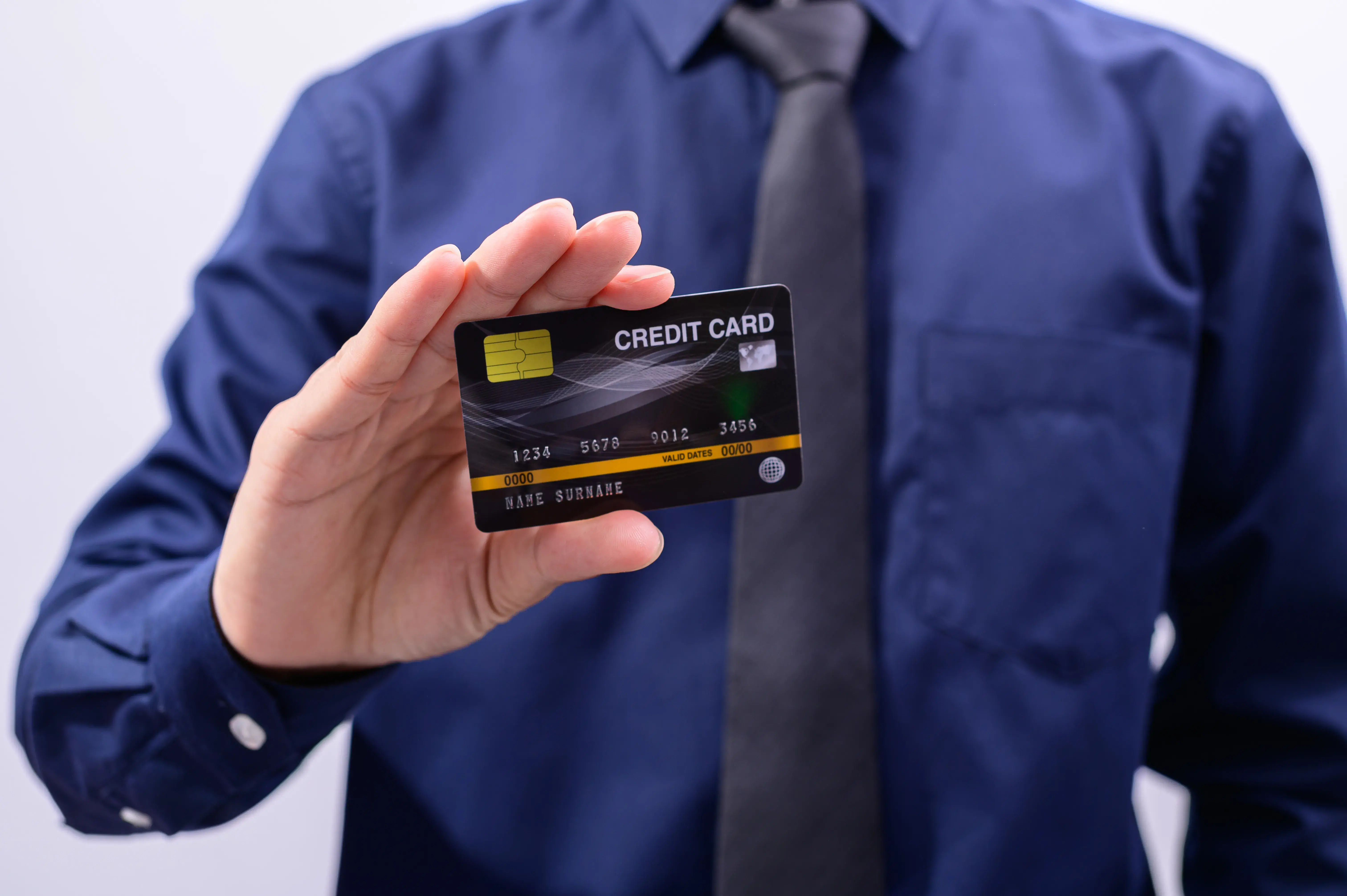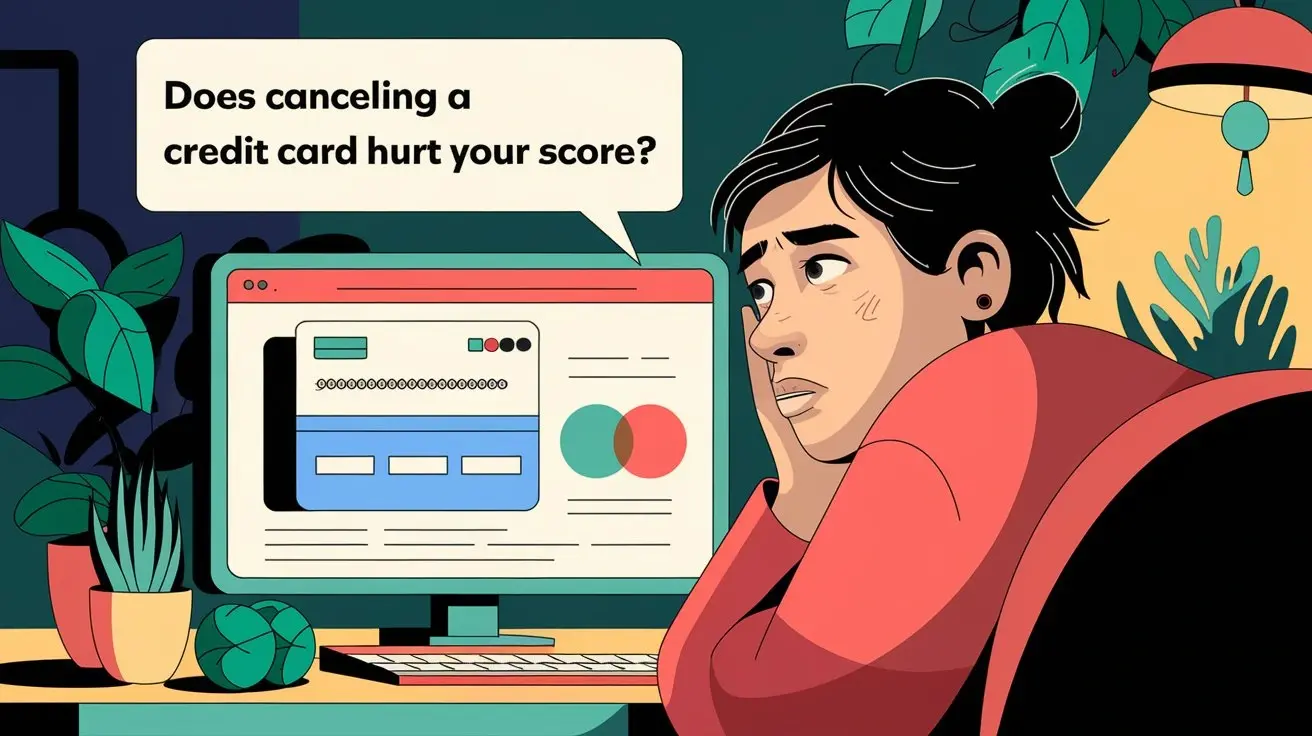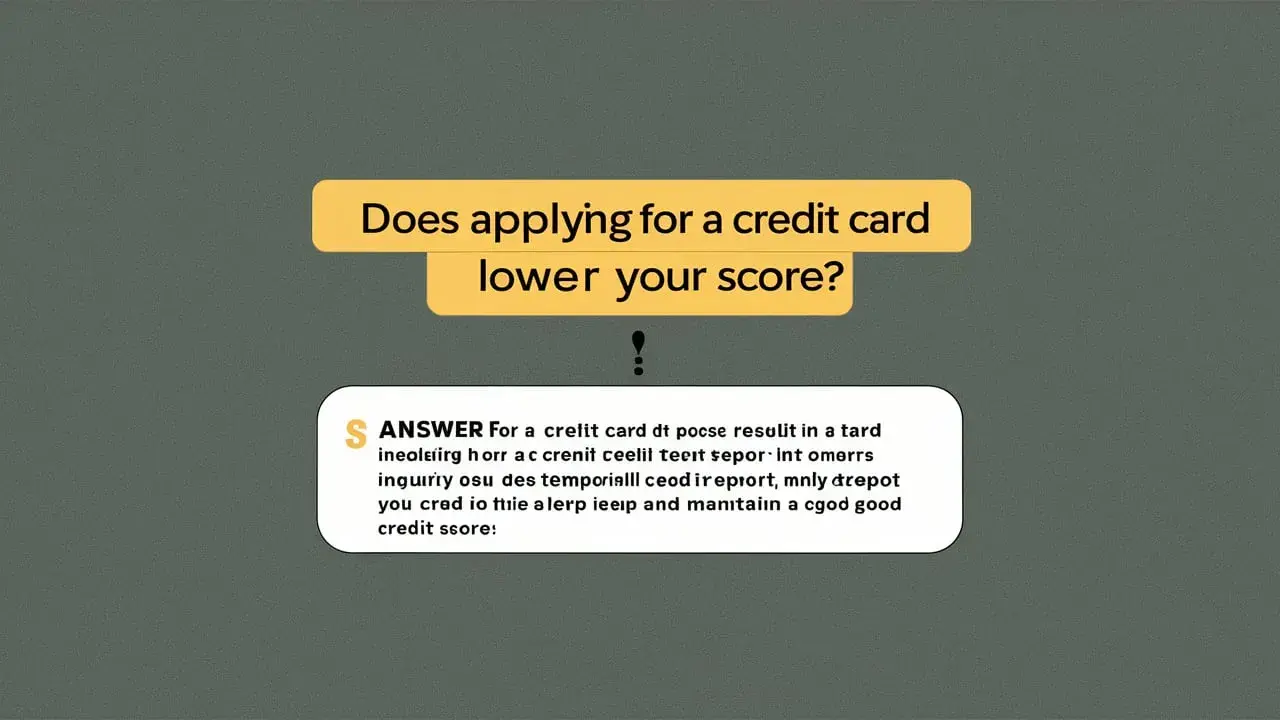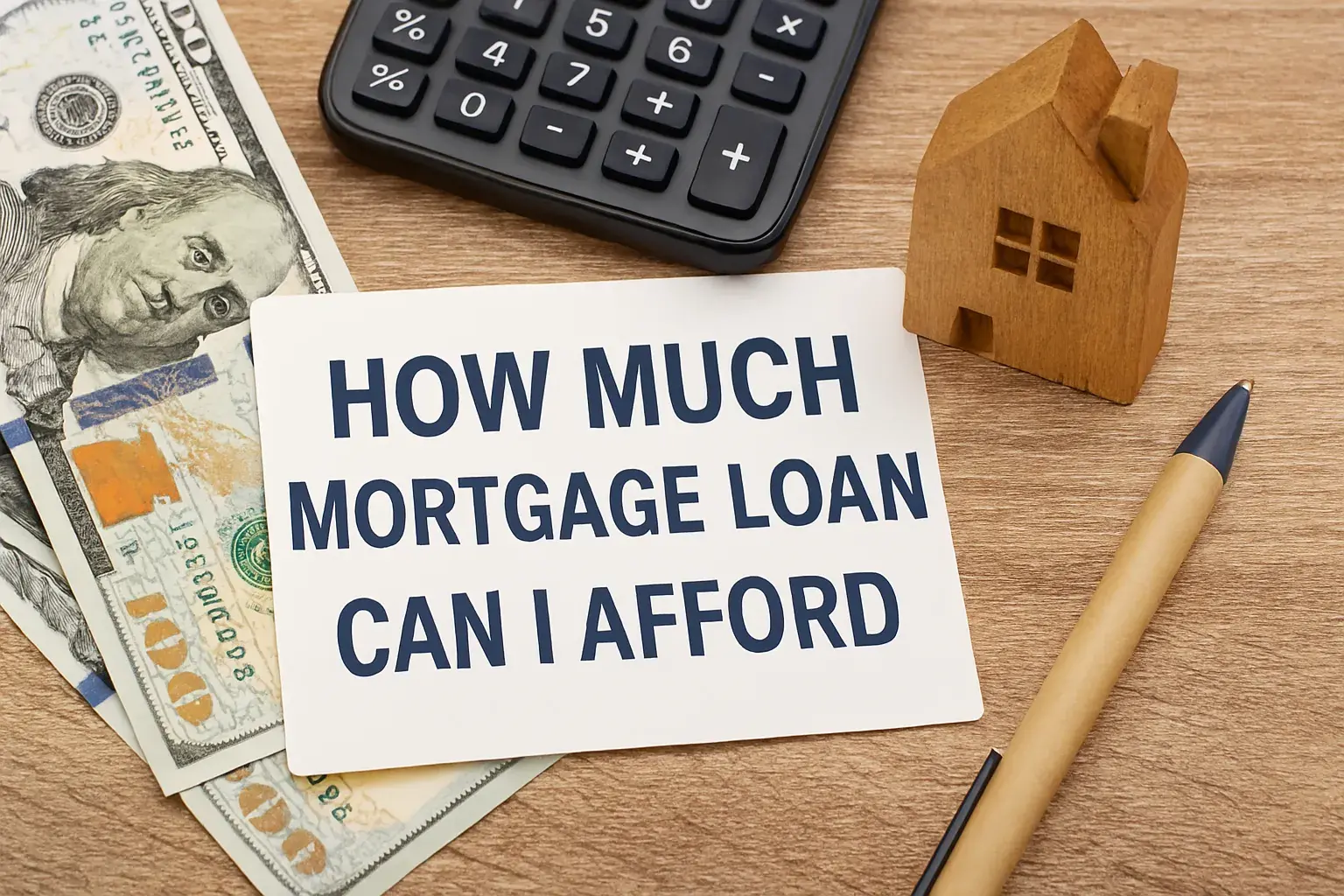-
Posted on: 21 Dec 2022

-
Navigating the world of credit can feel daunting, especially when you're looking to build or rebuild your credit history. This guide demystifies secured credit cards, offering a clear path to obtaining one. Discover how a secured credit card can be your stepping stone to financial freedom and improved creditworthiness.
What Exactly Are Secured Credit Cards?
A secured credit card is a type of credit card that requires a cash deposit to open and use. This deposit acts as collateral, significantly reducing the risk for the card issuer. Unlike unsecured credit cards, which are typically approved based on your credit history and income, secured cards are accessible to individuals with limited or poor credit. The credit limit on a secured card is usually equal to the amount of your deposit. For instance, if you deposit $500, your credit limit will likely be $500. This makes them an excellent tool for those looking to establish or rebuild their credit profile.
The primary function of a secured credit card is to provide a safe avenue for lenders to offer credit to individuals who might otherwise be denied. The collateral ensures that if you fail to make payments, the issuer can recoup their losses by using your deposit. This inherent security makes issuers more willing to approve applications from a broader range of individuals. The deposit is typically refundable once you close the account in good standing or upgrade to an unsecured card. It's important to understand that while the deposit secures the card, responsible usage is still paramount for building a positive credit history.
How They Work: The Collateral Mechanism
The core of a secured credit card lies in its collateralization. When you apply for a secured card, you'll be asked to provide a cash deposit. This deposit is held by the credit card issuer in a separate account. The amount you deposit directly influences your credit limit. For example, a $200 deposit might grant you a $200 credit limit, while a $1,000 deposit could result in a $1,000 limit. This deposit serves as a safety net for the issuer. If you miss payments or default on the card, the issuer has the right to use your deposited funds to cover the outstanding balance.
Once the card is activated, you can use it like any other credit card for purchases. The issuer will report your payment activity to the major credit bureaus (Equifax, Experian, and TransUnion). This reporting is crucial because it's how your responsible usage translates into a better credit score. As long as you make your payments on time and keep your credit utilization low, you'll be building a positive credit history. The deposit itself doesn't earn interest, and it remains with the issuer until the account is closed and all balances are settled, or until you qualify for an upgrade to an unsecured product.
Who Benefits Most from Secured Credit Cards?
Secured credit cards are particularly beneficial for several groups of people:
- Individuals with No Credit History: If you're a young adult or have never used credit before, a secured card is an ideal starting point. It allows you to build a credit history from scratch.
- Individuals with Bad Credit: Those who have experienced financial difficulties, such as defaults, bankruptcies, or late payments, often find it hard to get approved for traditional credit cards. Secured cards offer a way back into the credit system.
- Students: Students often have limited income and no credit history, making secured cards a practical option for managing expenses and building credit while in school.
- Recent Immigrants: Newcomers to a country may not have a credit history in their new home, and secured cards can help them establish one.
- Anyone Looking to Rebuild Credit: Even if your credit isn't terrible, but you want to improve it, a secured card can be a strategic tool.
Why Choose a Secured Credit Card? The Benefits Explained
The decision to get a secured credit card is often driven by the significant advantages it offers, especially for those with less-than-perfect credit. These cards are designed to be accessible and provide a clear pathway to financial improvement. By understanding these benefits, you can better appreciate their value in your financial journey.
Building and Rebuilding Credit
This is arguably the most significant benefit. When you use a secured credit card responsibly, your issuer reports your payment history to the three major credit bureaus: Equifax, Experian, and TransUnion. Making on-time payments and keeping your credit utilization low are key factors that contribute positively to your credit score. Over time, this consistent, positive activity will help you build a credit history from scratch or repair damage from past financial mistakes. By 2025, credit scores are increasingly important for everything from renting an apartment to securing better insurance rates, making this aspect invaluable.
Accessibility for Bad Credit or No Credit
Traditional unsecured credit cards often have strict approval requirements, making them difficult to obtain for individuals with poor credit or no credit history. Secured credit cards, on the other hand, are designed with these individuals in mind. The collateral requirement significantly lowers the risk for lenders, meaning that approval is much more likely, even with a low credit score or a blank credit report. This accessibility opens doors that might otherwise remain closed.
Low Risk for Issuers and Cardholders
For issuers, the cash deposit acts as a guarantee against potential losses. This makes them comfortable extending credit. For cardholders, the risk is also mitigated. You can't spend more than your deposited amount (plus any approved credit line above the deposit), preventing you from falling into overwhelming debt. The deposit is also refundable, meaning you get your money back once the account is closed in good standing or you transition to an unsecured card.
Potential for Credit Limit Increases
As you demonstrate responsible usage over time, some issuers may offer to increase your credit limit, even on a secured card. This could happen without requiring an additional deposit, or they might allow you to deposit more to increase your limit. This is a positive sign of your growing creditworthiness. In some cases, issuers will automatically review your account periodically to see if you qualify for an upgrade to an unsecured card, which often comes with a higher credit limit.
Learning Financial Management
A secured credit card serves as an excellent training ground for managing credit responsibly. It teaches you the importance of budgeting, making payments on time, and understanding credit utilization. These are fundamental skills that will serve you well throughout your financial life, whether you continue to use secured cards or move on to unsecured options.
Eligibility Criteria: Who Can Get a Secured Credit Card?
The beauty of secured credit cards lies in their broad eligibility. While specific requirements can vary slightly between issuers, the general criteria are designed to be inclusive. The primary focus is on your ability to provide the security deposit, rather than a pristine credit history.
Minimum Age
Like all credit cards, you must be at least 18 years old to apply for a secured credit card in the United States. Some issuers may require applicants to be 21 unless they can demonstrate independent income or a co-signer. This is a standard legal requirement for entering into contractual agreements.
Social Security Number (SSN) or Individual Taxpayer Identification Number (ITIN)
Most U.S. credit card issuers require applicants to have a valid Social Security Number (SSN) or an Individual Taxpayer Identification Number (ITIN) to verify identity and report credit activity to the bureaus. If you are a non-citizen, an ITIN can often be used in place of an SSN for credit applications.
Physical Address
You will need to provide a verifiable U.S. physical address. P.O. boxes are generally not accepted as the sole address for credit card applications. This is for mailing statements, cards, and for identity verification purposes.
Ability to Provide a Security Deposit
This is the most critical requirement. You must have the funds available to deposit with the issuer. The minimum deposit amount varies by card, typically ranging from $49 to $300, though some may require more. The amount you deposit will generally determine your credit limit. Ensure the funds you use for the deposit are not essential for your immediate living expenses.
Income Requirements (Often Minimal)
While issuers will ask about your income, the requirements for secured cards are usually much lower than for unsecured cards. They want to ensure you have some source of income to make at least minimum payments, but the deposit provides the primary security. For 2025, many issuers focus more on the deposit than a high income for secured cards.
Credit History Flexibility
This is where secured cards shine. They are specifically designed for individuals with limited credit history, bad credit, or no credit at all. You typically won't be denied solely based on past credit mistakes or a lack of credit history, as long as you can meet the deposit requirement. Some issuers might perform a soft credit check, which doesn't impact your score, to verify identity and check for fraud, but a hard inquiry that lowers your score is less common or may be waived for secured cards.
How to Get a Secured Credit Card: A Step-by-Step Guide
Applying for a secured credit card is a straightforward process. By following these steps, you can navigate the application and approval smoothly. The key is to be prepared and choose a card that aligns with your financial goals.
Step 1: Assess Your Credit Situation
Before you start looking for cards, it's helpful to know where you stand. Obtain a free copy of your credit report from AnnualCreditReport.com. Review it for any errors that you might need to dispute. Understanding your current credit score (if you have one) will also help you gauge your options, although for secured cards, this is less critical than for unsecured ones.
Step 2: Research and Compare Secured Cards
Not all secured cards are created equal. Look for cards that report to all three major credit bureaus, as this is essential for building credit. Consider factors like:
- Annual Fees: Some cards charge an annual fee, while others do not. Aim for a no-annual-fee card if possible.
- Deposit Requirements: Minimum deposit amounts can vary. Find one that fits your budget.
- Interest Rates (APR): While you should aim to pay your balance in full each month, a lower APR is better if you anticipate carrying a balance occasionally. Secured card APRs are often high.
- Card Issuer Reputation: Choose reputable banks or credit unions.
- Potential for Upgrade: Some issuers have a clearer path to upgrading to an unsecured card.
Reputable issuers for secured cards in 2025 include Discover, Capital One, and OpenSky. For example, the Discover it Secured Credit Card is often praised for its no annual fee and the potential to graduate to an unsecured card. The Capital One Secured Mastercard also offers a low minimum deposit and reports to all three bureaus.
Step 3: Gather Necessary Information
You'll typically need the following information for your application:
- Full legal name
- Date of birth
- Social Security Number (SSN) or Individual Taxpayer Identification Number (ITIN)
- U.S. physical address (not a P.O. Box)
- Phone number and email address
- Employment status and information
- Annual income
- Bank account information (for setting up payments and the deposit)
Step 4: Complete the Application
Most applications can be completed online through the issuer's website. Fill out all required fields accurately and honestly. Double-check your information before submitting. If you're applying in person, you'll fill out a paper application.
Step 5: Submit Your Security Deposit
Once your application is approved, you'll be instructed on how to submit your security deposit. This is usually done electronically via bank transfer or check. The card will not be activated until the deposit is received and processed by the issuer.
Step 6: Receive and Activate Your Card
After your deposit is processed, your secured credit card will be mailed to you. This can take anywhere from a few days to a couple of weeks. Once you receive it, follow the instructions provided to activate the card. This typically involves calling a toll-free number or visiting a website.
Step 7: Start Using Your Card Responsibly
Your secured credit card is now ready to use. To build credit effectively, make small purchases you can afford to pay off, and always pay your bill on time and in full. Avoid maxing out the card, as high credit utilization can negatively impact your score.
Choosing the Right Secured Credit Card for Your Needs
Selecting the best secured credit card involves more than just finding one that approves your application. It's about choosing a tool that will best serve your credit-building goals. Consider these factors to make an informed decision.
Key Factors to Consider
When comparing secured credit cards, pay close attention to the following:
- Annual Fees: Many secured cards come with annual fees, which can eat into your credit-building efforts. Prioritize cards with no annual fees or very low ones. For 2025, the trend is towards cards with minimal or no annual fees to attract more users.
- Deposit Amount and Credit Limit: The minimum deposit can range from $49 to $300 or more. Your credit limit will typically be equal to your deposit. Choose a card where the deposit amount is manageable for your budget. Some cards allow you to deposit more to increase your credit limit.
- Interest Rate (APR): Secured cards often have high APRs, sometimes exceeding 25%. While your goal should be to pay your balance in full each month, a lower APR is beneficial if you anticipate carrying a balance.
- Reporting to Credit Bureaus: This is non-negotiable. Ensure the card reports to all three major credit bureaus (Equifax, Experian, and TransUnion). If it doesn't, it won't help you build credit.
- Fees: Beyond the annual fee, check for other potential fees such as late payment fees, over-limit fees (though less common with secured cards), and foreign transaction fees.
- Rewards Programs: Some secured cards offer rewards like cash back or points, though these are less common than with unsecured cards. If you can find one with rewards and no annual fee, it's a bonus.
- Path to Unsecured Card: Some issuers have a straightforward process for graduating to an unsecured card after a period of responsible use. This is a significant advantage as it means you can eventually get your deposit back and have access to better credit products.
Popular Secured Cards in 2025 (Illustrative Examples)
While specific offers can change, here are types of cards and features to look for:
Card Feature Example Card Type 1 (e.g., Discover it Secured) Example Card Type 2 (e.g., Capital One Secured) Example Card Type 3 (e.g., OpenSky Secured) Annual Fee $0 $0 $35 (typical) Minimum Deposit $200 (can be lower, up to $2,500 for limit) $49 (can potentially get a higher limit with larger deposit) $200 (typical) Credit Limit Equal to deposit Can be higher than deposit with larger deposit Equal to deposit Reports to Bureaus Yes (all 3) Yes (all 3) Yes (all 3) Rewards Yes (cash back) No No Upgrade Path Yes, automatic review Yes, automatic review Less common, requires application APR High (variable) High (variable) High (variable) Note: Specific terms and conditions can vary. Always check the issuer's official website for the most current details.
Issuer Reputation Matters
Stick with well-known and reputable financial institutions. Major banks and credit card companies have established systems for reporting to credit bureaus and customer service. Avoid lesser-known entities that might not have the same commitment to credit reporting or consumer protection. Look for issuers that have a good track record in helping customers rebuild credit.
Managing Your Secured Credit Card Responsibly for Maximum Impact
Simply obtaining a secured credit card is only the first step. To truly benefit from it and improve your creditworthiness, you must manage it responsibly. This involves consistent good habits and a mindful approach to spending and payments.
Pay On Time, Every Time
Payment history is the most significant factor in your credit score, accounting for about 35% of your FICO score. Late payments can severely damage your credit. Set up automatic payments for at least the minimum amount due to ensure you never miss a deadline. Ideally, pay the full statement balance each month to avoid interest charges.
Keep Credit Utilization Low
Credit utilization is the ratio of your credit card balance to your credit limit. Experts recommend keeping this ratio below 30%, and ideally below 10%, for the best impact on your credit score. For example, if your secured card has a $500 limit, try to keep your balance below $150 (30%) or even below $50 (10%). Making multiple small payments throughout the month can help keep your reported balance low.
Monitor Your Spending
Since your credit limit is tied to your deposit, it's easy to overspend if you're not careful. Treat your secured card like a debit card – only spend what you can afford to pay back immediately. Regularly check your account online or via the mobile app to track your spending and ensure you're staying within your budget.
Avoid Cash Advances
Cash advances typically come with very high fees and interest rates that start accruing immediately. They are a costly way to access cash and can negatively impact your credit if not managed carefully. For secured cards, it's best to avoid them altogether.
Review Your Credit Reports Periodically
As you use your secured card, your payment history will be reported to the credit bureaus. Periodically check your credit reports to ensure the information is accurate. Look for any errors or unauthorized activity. You can get free copies of your credit reports annually from AnnualCreditReport.com.
Understand Your Statement
Take the time to read your monthly credit card statement. It details your purchases, payments, fees, interest charges, and credit limit. Understanding these components is crucial for managing your account effectively.
Secured vs. Unsecured Credit Cards: Key Differences
Understanding the distinction between secured and unsecured credit cards is vital for making informed financial decisions. While both can help build credit, they operate on fundamentally different principles.
Collateral Requirement
Secured: Requires a cash deposit as collateral. This deposit typically determines the credit limit. The issuer can use the deposit to cover unpaid balances.
Unsecured: Does not require a cash deposit. Approval is based solely on the applicant's creditworthiness (credit score, income, credit history).
Eligibility
Secured: Accessible to individuals with poor credit, limited credit history, or no credit history. The deposit is the primary requirement.
Unsecured: Generally requires a good to excellent credit score and a solid credit history for approval. Approval is more challenging for those with damaged credit.
Credit Limits
Secured: Credit limits are usually tied to the amount of the security deposit, often ranging from $200 to $3,000. They are typically lower than unsecured cards.
Unsecured: Credit limits can vary widely, from a few hundred dollars to tens of thousands, depending on the applicant's credit profile and the card's features.
Interest Rates (APRs)
Secured: Often have higher APRs compared to unsecured cards, reflecting the increased risk the issuer might perceive despite the collateral. However, if paid in full monthly, the APR is irrelevant.
Unsecured: APRs vary, but cards for individuals with excellent credit tend to have lower rates than secured cards.
Purpose
Secured: Primarily used for building or rebuilding credit for individuals who cannot qualify for unsecured credit. It's a stepping stone.
Unsecured: Used for everyday purchases, earning rewards, and managing finances by individuals with established credit histories.
Upgrade Potential
Secured: Designed as a temporary tool. Responsible use often leads to an upgrade to an unsecured card, allowing you to recover your deposit.
Unsecured: Once you have a good credit history, you can apply for more premium unsecured cards with better rewards and benefits.
By understanding these differences, you can strategically use a secured card to achieve your financial goals and eventually qualify for the more versatile unsecured credit cards.
Common Pitfalls to Avoid When Getting a Secured Credit Card
While secured credit cards are excellent tools, there are common mistakes that can hinder your progress or even lead to negative outcomes. Being aware of these pitfalls can help you avoid them.
Ignoring Fees
Some secured cards come with a variety of fees, including annual fees, monthly maintenance fees, processing fees, and even inactivity fees. These fees can add up and negate the benefits of building credit. Always read the cardholder agreement carefully to understand all associated costs. Prioritize cards with no annual fees if possible.
Not Reporting to Credit Bureaus
The primary purpose of a secured credit card is to build credit. If the card issuer does not report your payment activity to all three major credit bureaus (Equifax, Experian, TransUnion), it will not help you improve your credit score. Ensure this is explicitly stated in the card's terms before applying.
Maxing Out the Card
While your credit limit is tied to your deposit, it's tempting to spend up to that limit. However, maintaining a high credit utilization ratio (spending close to your limit) can negatively impact your credit score. Keep your spending well below your credit limit, ideally under 30%.
Missing Payments
Late payments are detrimental to your credit score. Even one missed payment can cause your score to drop significantly and remain on your report for years. Always pay on time, even if it's just the minimum amount due. Setting up automatic payments is a good strategy.
Treating It as "Free Money"
A secured credit card is still a form of credit. You are borrowing money that you will need to repay. Do not view your credit limit as extra cash. Spend only what you can afford to pay back promptly to avoid accumulating debt and interest charges.
Not Planning for Upgrade
Secured cards are often a temporary solution. While they are useful, your ultimate goal should be to transition to an unsecured card. Understand the issuer's process for upgrading. If an issuer doesn't offer a clear path, you might need to switch to a different card after establishing a good credit history.
Forgetting About the Deposit
Your deposit is your money, but it's held by the issuer. Make sure you understand the terms for its refund. It's typically returned when you close the account in good standing or graduate to an unsecured card. Don't use the deposit for essential living expenses.
When Can You Upgrade to an Unsecured Card?
The transition from a secured credit card to an unsecured one is a key milestone in rebuilding credit. It signifies that you've demonstrated sufficient responsibility to lenders and can now access traditional credit products. The timing and process for this upgrade vary by issuer.
Typical Timeframes
Most issuers will review your account for an upgrade to an unsecured card after a period of consistent, responsible usage. This period typically ranges from:
- 6 to 12 months: Many issuers will automatically review your account for a potential upgrade around this mark.
- 18 to 24 months: If automatic reviews aren't standard, this is often the timeframe within which you might be eligible to apply for an upgrade or be proactively offered one.
The key factors that influence this decision are your payment history (on-time payments are crucial), your credit utilization, and the overall length of time you've managed the secured card responsibly.
Factors Influencing Upgrade Eligibility
- Payment History: Consistently making on-time payments is the most critical factor. Late payments will delay or prevent an upgrade.
- Credit Utilization: Keeping your balance low relative to your credit limit demonstrates good financial management.
- Account Age: The longer you've had the secured card and managed it well, the better.
- Credit Score Improvement: While not always the sole determinant, an improving credit score shows you're becoming a less risky borrower.
- Issuer Policies: Each issuer has its own internal policies and criteria for offering unsecured cards. Some are more aggressive in graduating secured cardholders than others.
The Upgrade Process
There are generally two ways to transition to an unsecured card:
- Automatic Review: Many issuers, like Discover and Capital One, will periodically review your account for eligibility. If you meet their criteria, they will automatically convert your secured card to an unsecured one and refund your deposit. You'll receive a new card with a potentially higher credit limit.
- Application for Upgrade: Some issuers may require you to apply for an unsecured card after a certain period. In this case, they might perform a credit check. Your responsible history with the secured card will significantly improve your chances of approval.
Once you are approved for an unsecured card and your deposit is refunded, you can then close your secured card account if you wish, or keep it open if it serves another purpose (e.g., a very old account to boost your average account age).
Your Path to a Stronger Financial Future
Secured credit cards are powerful tools for anyone looking to establish or repair their credit. By understanding what they are, who they're for, and how to use them effectively, you can unlock a world of financial opportunities. Remember, responsible usage—paying on time, keeping balances low, and monitoring your account—is key to transforming your creditworthiness.
The journey to a strong credit score begins with informed decisions. Choose a reputable issuer, manage your secured card diligently, and you'll soon be on your way to qualifying for unsecured credit cards with better terms and rewards. This guide has provided you with the knowledge to navigate the process confidently. Take the first step today with Credit Repair Ease, and build a brighter financial future.











